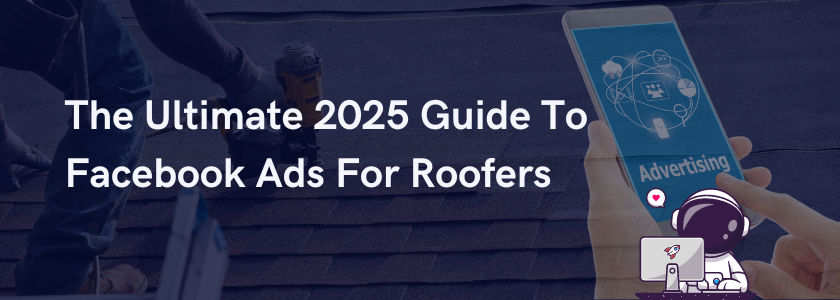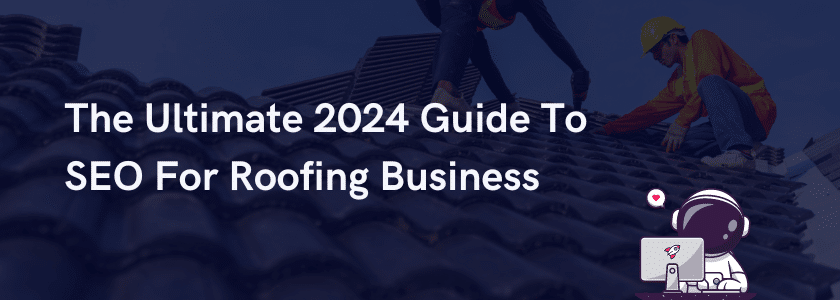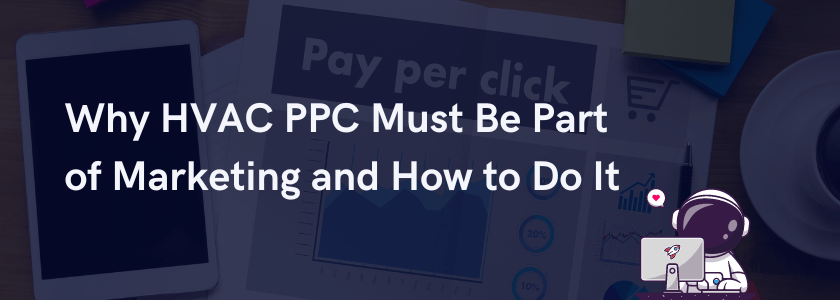If you’re running a business and haven’t explored roofing Facebook Ads yet, you’re missing out on a powerful way to reach homeowners in your area.
With over 2.9 billion users, Facebook offers roofing companies an opportunity to connect with potential customers at a fraction of the cost of traditional advertising methods.
Not sure where to start? Not to worry, this article will cover everything you need to know to get your Facebook Advertising up and running by 2025—from setting up your account and crafting high-converting ads to targeting the right audience and maximizing your budget.
By the end, you’ll have a comprehensive understanding of how to use roofing Facebook Ads to generate more leads and grow your business.
Table of contents
Why Roofing Facebook Ads Matter
Roofing companies often face challenges when it comes to reaching their ideal customers.
You’re dealing with a very specific niche that requires local targeting and trust-building. That’s where roofing Facebook Ads come in.
Unlike other platforms, Facebook allows you to zero in on a precise audience based on demographics, interests, and location, making it easier to target homeowners who might need your services.
And if you’re thinking, “Isn’t Google Ads better?”—the answer is: it depends.
Google Ads are great when homeowners are actively searching for roofing services, but Facebook Ads for roofing companies can help you reach people before they even realize they need a new roof.
You can introduce them to your brand and build awareness so that when the time comes, your business is the first they think of.

Understanding the Basics of Roofing Facebook Ads
There’s no one-size-fits-all when it comes to roofing Facebook Ads. Depending on your goals, you might want to use one or more of the following formats.
1. Photo Ads
Photo Ads are the simplest form of roofing Facebook Ads, yet they can be incredibly powerful when used correctly. For your business, think of these as your digital portfolio.
Use high-quality images that show off the before-and-after results of a recent project. Highlight your craftsmanship and attention to detail.
For example, if you’ve just completed a beautiful slate roof for a historic home, a crisp photo highlighting the transformation can immediately grab attention.
2. Video Ads
Video Ads are perfect for showcasing the “how” behind your work. You can use a short video to show the stages of a roofing installation, highlight your safety practices, or even feature a happy customer giving a testimonial.
Videos are more engaging than static images, and they let potential clients get a better feel for your company’s personality and expertise.
For instance, create a 30-second video that starts with a damaged roof, shows clips of your team in action, and ends with a shiny new roof. Add a voiceover or on-screen text to point out key elements like durability and design.
Pro Tip: Keep it short and sweet—15-30 seconds is usually ideal. Use captions to ensure your message is clear even if the viewer watches without sound.
3. Carousel Ads
Carousel Ads let you showcase up to 10 images or videos within a single ad, making them ideal for displaying a variety of roofing services or projects.
Each card can have its own headline, description, and link, allowing you to highlight different services such as “New Roof Installation,” “Roof Repairs,” and “Gutter Replacement.”
You can also use Carousel Facebook Ads for roofing companies to showcase the stages of a single project.
For example, the first image might be a damaged roof, the second could show your team at work, and the final image can highlight the finished project. This helps build a narrative that engages viewers and gives them a deeper understanding of your services.
4. Slideshow Ads
Slideshow Ads combine images and text to create short video-like presentations. They’re lightweight and load quickly, even on slower internet connections, making them ideal for areas where high-speed connectivity isn’t a given. This format works great for telling a quick story about your company—whether it’s about your founding, your team’s values, or a project timeline.
For a roofing business, you can use Slideshow Ads to highlight a typical project process, from inspection and consultation to project completion.
5. Lead Generation Ads
Lead Generation Ads are a game-changer for roofing companies. Instead of sending users to a separate landing page, this type of roofing Facebook Ads allow potential customers to submit their contact information directly within Facebook. This makes it easy for homeowners to request a quote or schedule an inspection without ever leaving the platform.
To make the most of Lead Generation Ads, include a compelling offer in your ad copy, like “Get a Free Roof Inspection!” or “Claim Your 10% Discount on Roof Repairs Today!” The form should be straightforward—asking for name, phone number, and address is usually enough to start a conversation.
Pro Tip: Always include a qualifying question, such as “Are you looking to replace your roof in the next 3-6 months?” This helps ensure you’re only getting roofing leads that are serious about your services.
What Makes Roofing Facebook Ads Different from SEO?
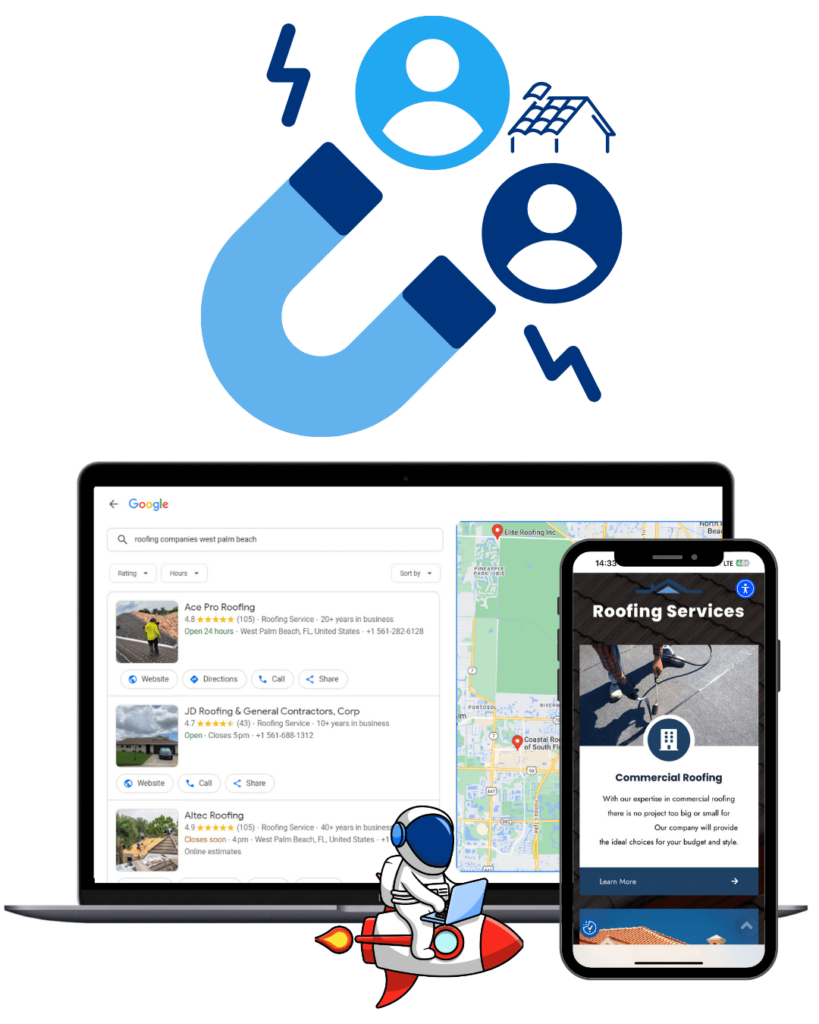
Roofing Facebook Ads and SEO are two different strategies that serve unique purposes in digital marketing. Facebook Ads for roofing companies are paid, delivering instant visibility by showing your ad to a specific audience even if they’re not searching for your service. This makes them ideal for quick lead generation and brand awareness.
In contrast, SEO is organic. It focuses on optimizing your website to rank higher in search results when people actively search for services like yours.
While SEO for roofing businesses takes longer to show results, it captures high-intent leads who are already interested.
The key difference is that roofing Facebook Ads push your message out to targeted users, while SEO pulls in people already searching for what you offer.
Combining both strategies in your digital marketing efforts can help your business reach a wider audience and achieve a balanced growth. Contact us today and let us help you with your roofing digital Marketing strategy
Key Terminologies You Need to Know
Familiarizing yourself with common metrics and definitions will not only help you interpret your ad performance but also empower you to make strategic adjustments to optimize your campaigns.
Here’s what each term means and why it’s crucial for your roofing business:
- CPM (Cost Per 1,000 Impressions)
How much you pay for every 1,000 people who see your ad. This metric helps you gauge the cost of getting your ad in front of a large audience. A high CPM might suggest your targeting is too narrow, making it more expensive to reach users, while a low CPM indicates that your ad is reaching people at a lower cost. It’s especially useful when running awareness campaigns for your roofing business in a specific location.
- CPC (Cost Per Click)
How much you pay each time someone clicks on your ad. This is crucial for understanding the efficiency of your roofing Facebook Ads in driving traffic to your site or landing page. If your CPC is too high, it might mean your audience isn’t finding your ad appealing, or your targeting needs adjustment. A lower CPC usually indicates that your ad is resonating well with viewers and driving meaningful engagement.
- CTR (Click-Through Rate)
The percentage of people who see your ad and then click on it. A high CTR means your ad is compelling and engaging, making people want to learn more about your roofing services. This is a good indicator of whether your messaging and visuals are effective. Low CTRs, on the other hand, could suggest that your ad isn’t relevant or enticing enough for your target audience.
- Lookalike Audiences
Audiences that resemble your existing customers based on demographics, interests, and behaviors. Facebook takes data from your current audience (like a list of past clients or website visitors) and finds new users who share similar traits. This is a powerful way to expand your reach and attract more homeowners who are likely to need your services, making it easier to grow your roofing business.
- Retargeting
Showing Facebook Ads for roofing companies to people who have already interacted with your business. This includes users who have visited your website, clicked on a previous ad, or engaged with your social media content. Retargeting is highly effective for re-engaging potential customers who didn’t convert the first time. For roofing businesses, it’s a great way to remind people to request a quote or schedule a roof inspection.
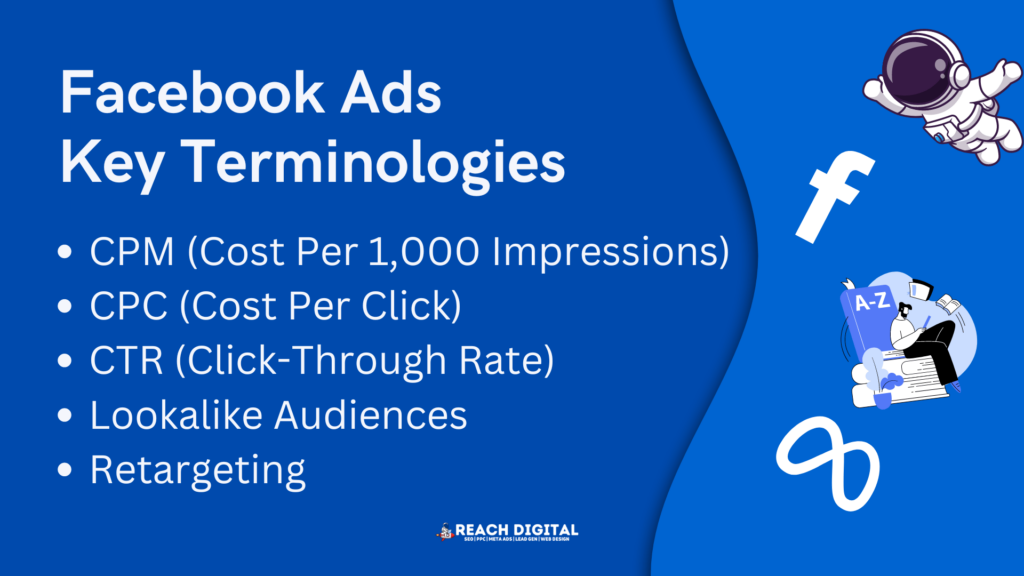
Ready to Setup Your Facebook Ad? Here’s How.
Below, we’ll explore each step in more detail so you can successfully launch and manage your roofing business’s Facebook ad campaigns.
Step 1: Create a Facebook Ads Manager Account
To get started, you’ll need to create a Facebook Ads Manager account. This requires having a Facebook business page since personal accounts can’t run roofing Facebook Ads.
Once you have a business page, head over to the Ads Manager and select “Go to Ads Manager” to set up your account. You’ll need to confirm your information, fill out your payment details, and save the changes.
Once you’ve completed these steps, you’ll be able to access your Ads Manager dashboard, where you can set up campaigns and track your roofing Facebook Ads.
Step 2: Start a New Campaign
Within Ads Manager, you’ll find your dashboard that displays your existing campaigns and ad sets.
If you’re just starting, the dashboard will be empty, and you’ll need to click on the “Create” button to start a new campaign. Choose the type of ad you want to create, such as awareness, traffic, or lead generation.
Once you select your campaign type, you can begin building out the ad’s structure.
Step 3: Know Your Objective
Facebook Ads Manager is designed to help you choose an objective that aligns with your business goals.
You can select from various campaign objectives, which include brand awareness, engagement, app installs, reach, website traffic, video views, catalog sales, store traffic, lead generation, messages, and conversions. Each objective is tailored to a specific outcome.
For instance, if your goal is to drive more traffic to your website, choose “Website Traffic” as your objective, and Ads Manager will guide you through setting up the rest of the campaign.
Step 4: Set a Budget
Next, you’ll need to set your budget and schedule for the campaign. Facebook gives you two main options: a daily budget or a lifetime budget.
A daily budget runs the ad continuously each day, while a lifetime budget spreads your spend over a set period.
There are additional controls to refine how your budget is spent, such as setting start and end dates and selecting specific times of the day for your ad to appear. These settings help ensure your ad is shown when your target audience is most active, maximizing your budget.
Step 5: Choose Your Target Audience
Defining your target audience is a crucial step in creating successful Facebook Ads for roofing companies. Facebook offers a variety of targeting options, including location, age, gender, education, languages, relationship status, home and work life, interests, and behaviors.
You can also target based on life events (such as recent home purchases), financial background, and even political views.
Moreover, you can upload your existing contact list to create a custom audience or use Lookalike Audiences to target users similar to your existing customers.
Step 6: Create Your Facebook Ad to Get Leads
Now it’s time to create the ad itself. Facebook offers several formats to choose from, including image, video, carousel (multiple images), slideshow, and collection ads. The format you choose should reflect your campaign’s objective.
For example, if you want to drive traffic to your site, you might opt for a “Link” ad format, while a “Carousel” ad might be better for showcasing different services or project photos.
Consider how each format aligns with your objective and use high-quality visuals and clear, engaging text to capture your audience’s attention.
Step 7: Monitor Analytics and Set Up Reporting
Once your ad is live, it’s crucial to track its performance. Facebook Ads Manager provides detailed metrics to help you monitor and optimize your campaigns.
Some key metrics to keep an eye on include:
- Performance: Frequency, results, reach, and impressions.
- Engagement: Page likes, post engagement, and comments.
- Clicks: Total clicks, click-through rate (CTR), and cost per click (CPC).
- Videos: Number of video views and average watch time.
- Website Actions: Purchases, checkouts, and other key interactions.
- Apps: App installs and engagement metrics.
- Events: Event responses and cost per event.
These analytics give you a clear picture of how your ad is performing and allow you to make data-driven decisions. You can set up custom reporting to track the metrics that matter most to your roofing business to ensure you’re getting the best possible return on your investment.
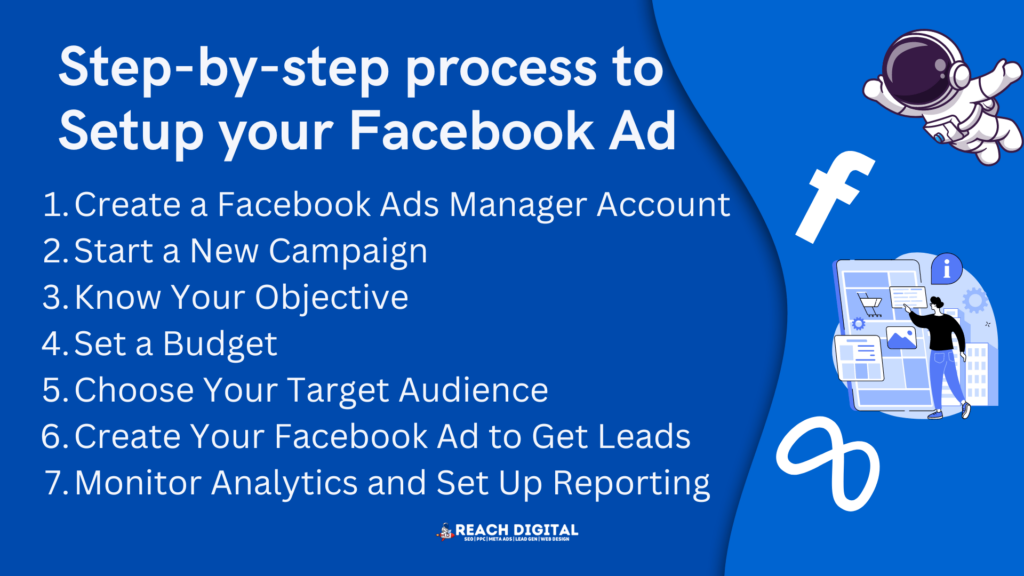
Common Mistakes to Avoid
Running a successful roofing Facebook ad campaign for your roofing business isn’t just about setting it up—it’s about avoiding common pitfalls that can drain your budget and limit your results. Here’s what you need to avoid to ensure the success of your ad:
- Targeting Too Broad of an Audience: If you don’t narrow down your audience by location, you risk wasting ad spend on people outside your service area. Make sure to define a precise geographical radius and include demographic factors like age, income, and homeownership status to ensure you’re reaching those who are most likely to need your roofing services.
- Not Using the Facebook Pixel Properly: The Facebook Pixel is a powerful tool that tracks user behavior on your website and helps optimize your campaigns. Without it, you’re missing out on crucial data that can show how people interact with your roofing Facebook Ads and website. Install the Pixel correctly and use it to create custom audiences, track conversions, and improve your targeting for better results.
- Ignoring Ad Performance Data: Launching roofing Facebook Ads is just the beginning—monitoring their performance is where the real work begins. Regularly reviewing metrics like Click-Through Rate (CTR), Cost Per Click (CPC), and Cost Per Lead (CPL) helps you understand what’s working and what isn’t. Use these insights to tweak your campaigns and optimize your ad spend for maximum impact.
- Using the Wrong Ad Format for the Wrong Goal: Each ad format is designed to achieve a specific objective, so using the wrong one can diminish your results. For example, Lead Ads are best for capturing contact information, while Video Ads are more effective for building brand awareness. Match the ad type to your campaign goals to ensure your roofing Facebook Ads resonate with your audience and drive the desired action.
Boost Your Roofing Business Through Roofing Facebook Ads
Roofing Facebook ads offer roofing companies a unique opportunity to reach a highly targeted audience, generate qualified leads, and build a strong local presence—all without breaking the bank. But with so many details to consider, running an effective campaign can feel overwhelming.
That’s where Reach Digital comes in. As the dedicated digital marketing agency for roofing businesses, our team of digital marketing experts can handle the entire process, ensuring your roofing Facebook ads reach the right people, deliver compelling messages, and produce measurable results.
If you’re ready to take your business to the next level with well-crafted Facebook Ads for roofing companies, get in touch with Reach Digital and let us help you transform your ad spend into real roofing customers.


